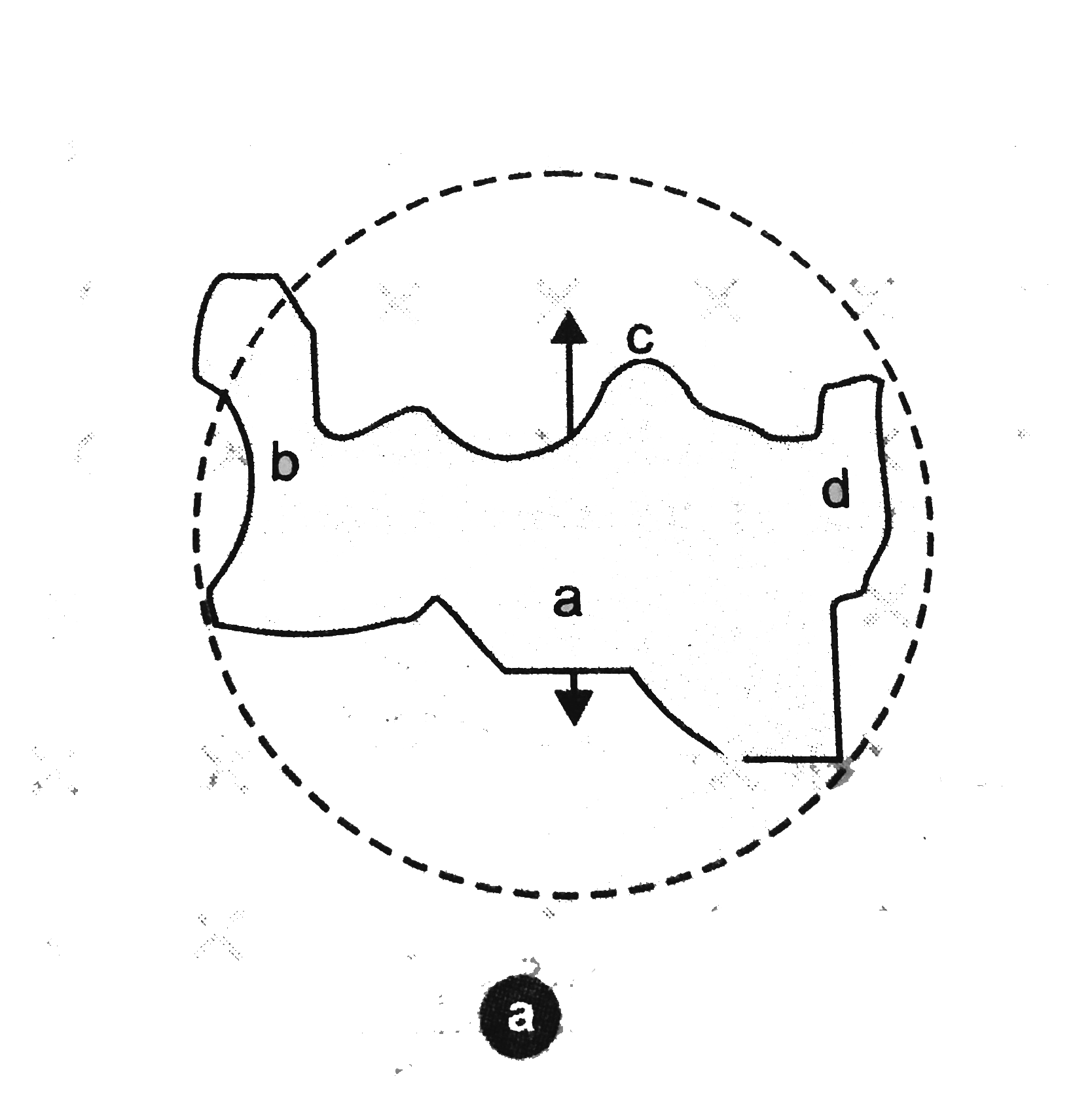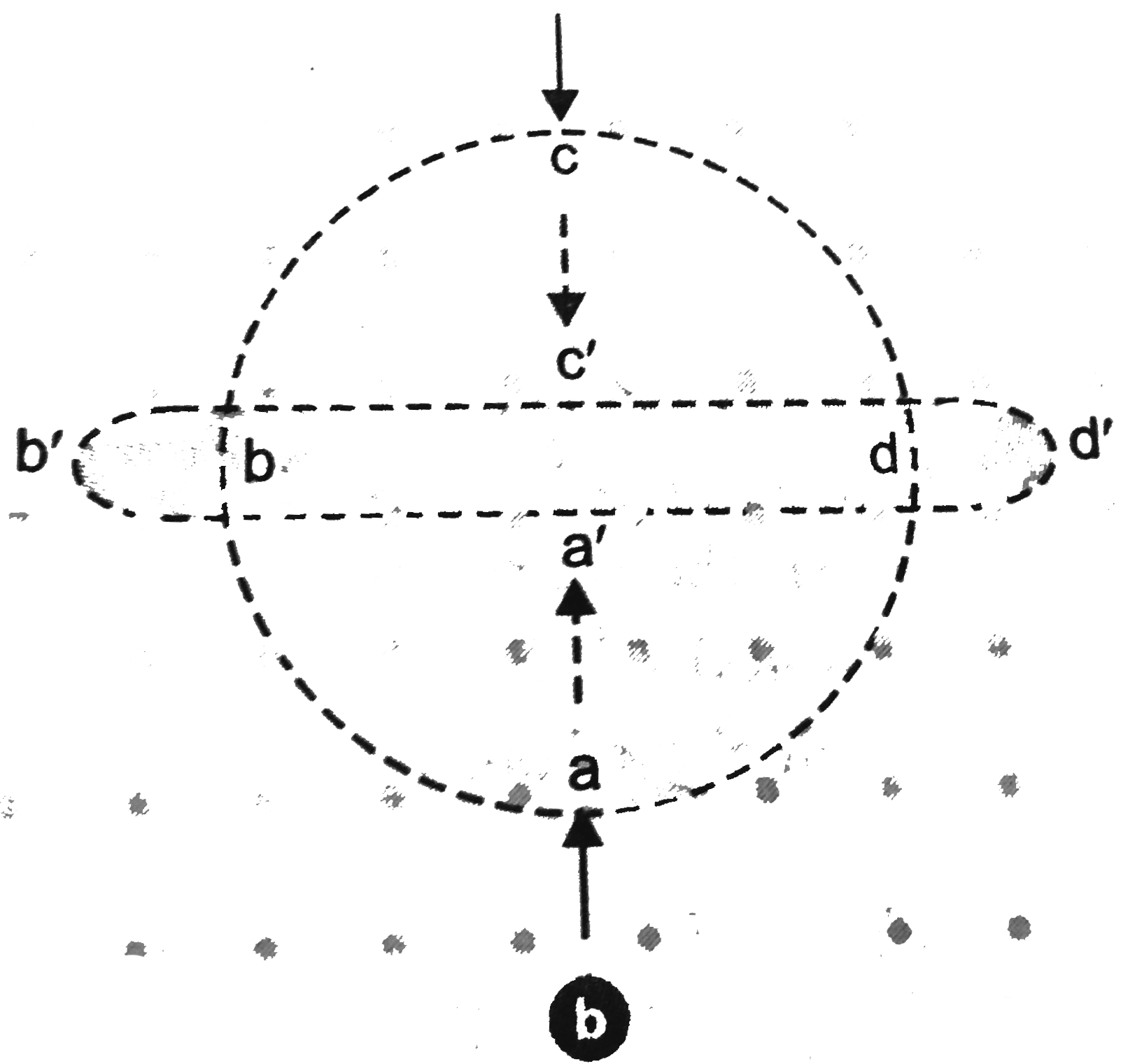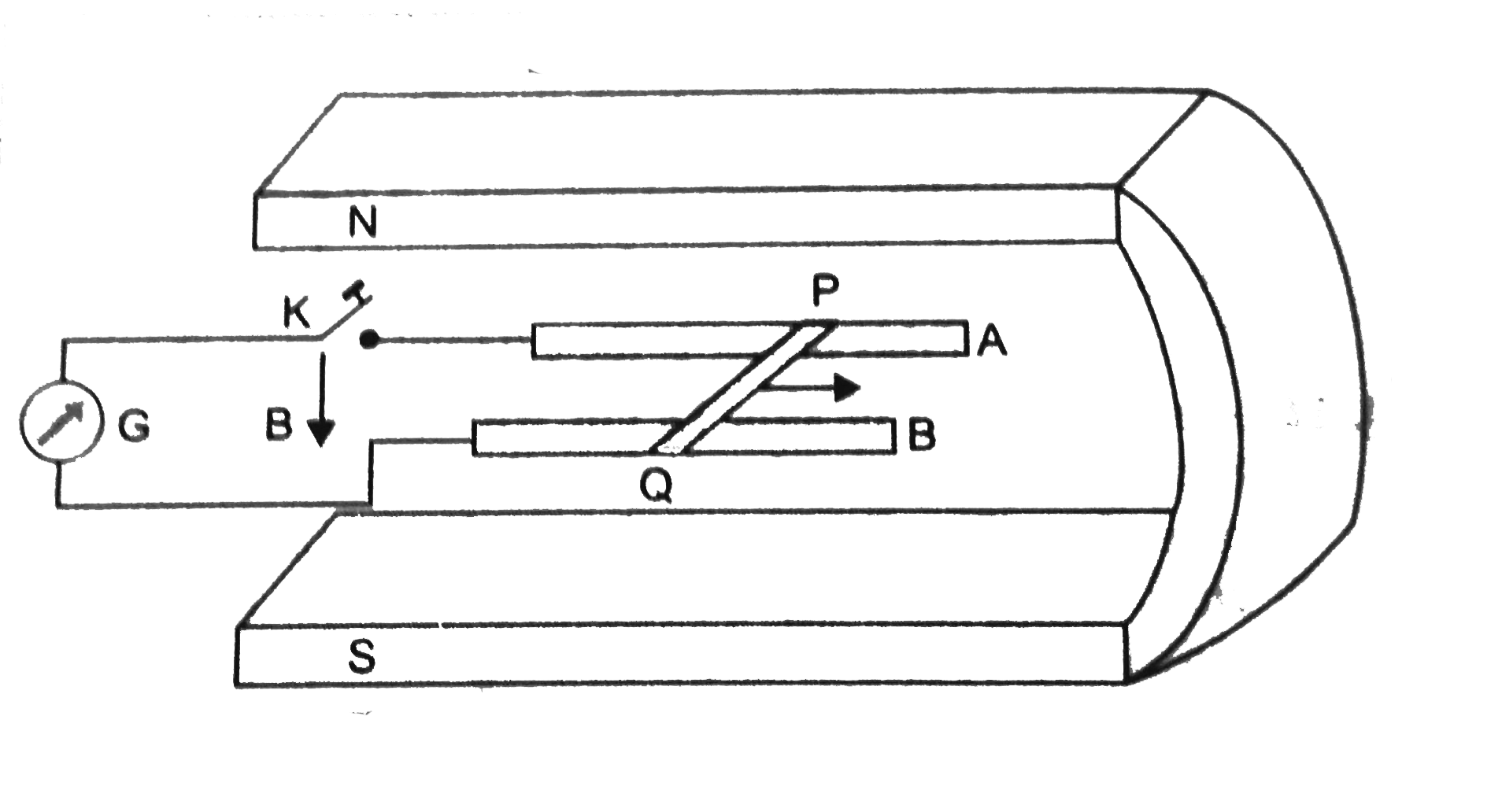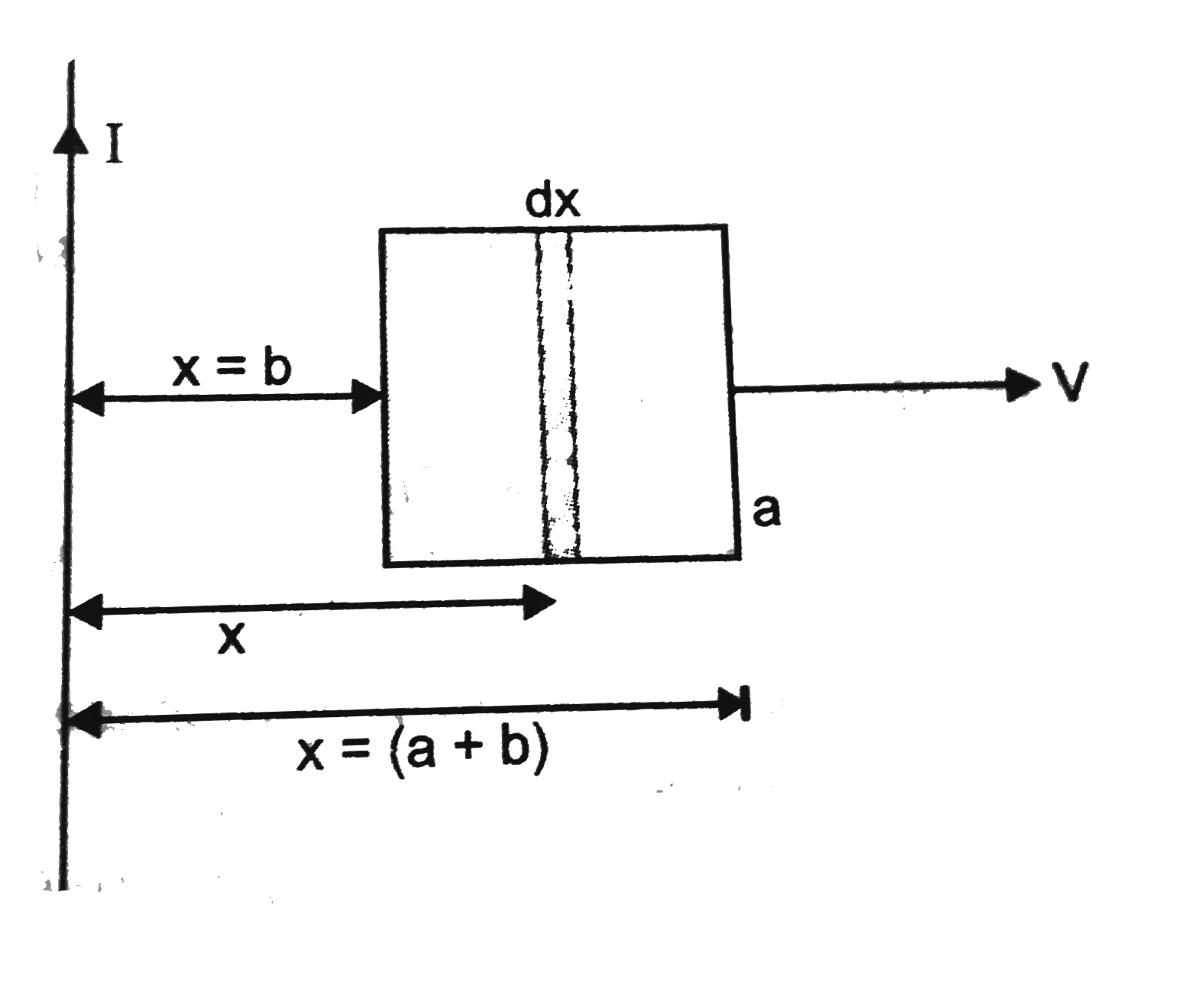Exercise from NCERT PHYSICS(HINGLISH) ELECTROMAGNETIC INDUCTION for Class 12
| Class 12 | PHYSICS |
| Chapter | ELECTROMAGNETIC INDUCTION |
| NCERT PHYSICS(HINGLISH) | Exercise |
| Medium | English |
| Academic Year | 2023-2024 |
Question 2
Use Lenz's law to determine the direction of induced current in the situation described by Fig.
(a) a wire irregular shape turning into a circular shape (b) a circular loop being deformed into a narrow straight wire. The across indicate the magnetic field into the paper and the dots indicate magnetic field out of the paper.

 View Solution
View SolutionQuestion 4
A rectangular loop of sides 8 cm and 2 cm with a small cut is moving out of a region of uniform megnetic field of magnitude 0.3 tesla directed normal to the loop. What is the voltage developed acorss the cut if velocity of the loop is 1cms−1 in a direction normal to the (i) longer side (ii) shorter side of the loop ? For how long does the induced voltage last in each case?View SolutionQuestion 5
A 1m long calculating rod rotates with an angular frequency of 400 rad s−1 an axis normal to the rod passing through its one one end. The other end of the rod is contact with a circular metallic ring. A constant magnetic field of 0.5 T parallel to the axis everywhere. Calculate the e.m.f. developed between the centre and the ring.View SolutionQuestion 6
A circular coil of radius 8.0 cm and 20 turns rotates about its vertical diameter with an angular speed of 50 rads−1 in a uniform horizontal magnetic field of magnitude 3×10−2T. Obtain the maximum and average e.m.f. induced in the coil . If the coil forms a closed loop of resistance 10Ω, calculate the maximum value of current in the coil. Calculate the average power loss due to Joule heating. Where does this power come from?View SolutionQuestion 7
A horizontal straight wire 10 m long extending from east to west falling with a speed of 0.5 ms−1 at right angles to the horizontal component of the earth's magnetic field 0.30×10−4Wbm−2
(a) What is the instantaneous value of the e.m.f. induced in the wire ?
(b) What is the direction of the e.m.f.
(c) Which end of the wire is at higher electric potential ?View SolutionQuestion 11
Suppose the loop in above question is stationary, but the current feeding the electromagnet produces the magnetic field is gradually reduced so that the field decreases form its initial value of 0.03 T at the rate of 0.02 T/sec. If the cut is joined and loop has a resistance of 1.6Ω, how much power is dissipated by the loop as heat ? What is the source of this power?View SolutionQuestion 12
A square loop of side 12 cm with its sides parallel to X and Y axes is moved with a velocity of 8 cm s−1 in the positive x-direction in an environment containing a magnetic field in the positive z-direction. The field is neither uniform in space nor constant in time. It has a gradient of 10−3Tcm−1 along the negative x-direction (that is it increases by 10−3Tcm−1as one moves in the negative x-direction), and it is decreasing in time at the rate of 10−3Ts−1. Determine the direction and magnitude of the induced current in the loop if its resistance is 4.50 mΩ. View SolutionQuestion 13
It is desired to measure the magnitude of field between the poles of a powerful loud speaker magnet. A small flat search coil of area 2cm2 with 25 closely wound turns is positioned normal to the field direction and then quickly snatched out of the field region (Equivalently, one can give it a quick 90∘ turn to bring its plane parallel to the field direction). The total charge flowing in the coil (mesured by a ballistic galbanometer connected to the coil) is 7.5 mC. The resistance of the coil and galvanometer is 0.5Ω. Estimate the field strength of the magnet.View SolutionQuestion 14
Fig. shows a metal rod PQ resting on the rails A, B and positoned between the poles of a permanent magnet. The rails, the rod and the magnetic field are in three mutually perperdicular directions. A galvanometer connects the rails through a switch K. Length of the rod = 15 cm, B = 0.50 T, resistance of closed loop containing the rod =9.0mΩ Answer the following questions.
(a) Suppose K is open and the rod moves with a speed of 12cm/s in the direction shown, Give the polarity and magnitude of induced e.m.f
(b) Is there on excess charge built up at the ends of rods when K is open ? What if K is closed ?
(c ) With K open and the rod moving uniformly, there is no net force on the electron in the rod PQ even though they do experience magnetic froce due to the motion of the rod Explain.
(d) What is the retarding force on the rod when K is closed?
(e) How much powe s required (by an external agent) to keep the rod moving at the same speed (=12cm/s) when K is closed. (f) How much power is dissipated as heat in the closed circuit ? What is the source of this power?
(g) What is the induced e.m.f. in the following in the moving rod when the permanent magnet is rotated to a vertical position so that the field is parallel to the rails instead of being perpendicular ?
 View Solution
View SolutionQuestion 15
An air cored solenoid with length 30 cm, area of cross-section 25cm2 and number of turns 500 carries a current of 2.5A. The current is suddenly switched off in a brief time of 10−3 s. How much is the average back e.m.f. induced across the ends of the open switch in the cuicuit ? Ignore the variation in magnetic field near the ends of the solenoid.View SolutionQuestion 16
(a) Obtain an expression for the mutual inductance between a long straight wire and a square loop of side a as shown in Fig.
(b) Evaluate the induced emf in loop if the wire carries a current of 50 A and the loop has an instantaneous velocity υ=10ms−1 at the location x = 0.2 m, as shown. Take a = 0.1m and assume that the loop has a large resistance.
 View Solution
View SolutionQuestion 17
A line charge λ per unit length is lodged uniformly onto the rim of a wheel of mass M and radius R. The wheel has light non-conducting spokes and is free to rotate without friction about its axis (Fig.). A uniform magnetic field extends over a circular region within the rim. It is given by,
B=−B0k (r≤a,a<R)
=0 (otherwise)
What is the angular velocity of the wheel after the field is suddenly switched off?
 View Solution
View Solution
